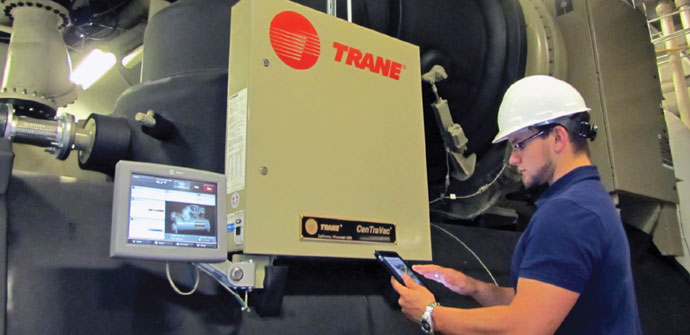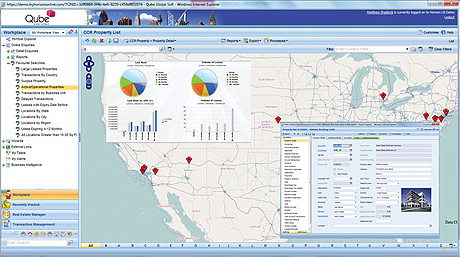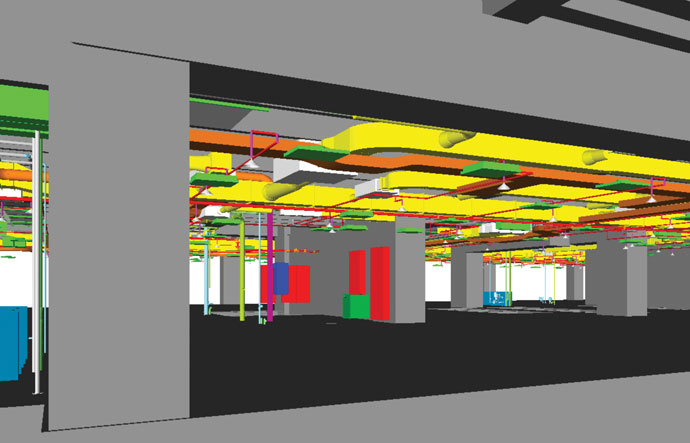Mobility of corporate real estate technology is a top priority these days as software developers rush to meet demand. Industry observers say there is still reluctance by corporate IT types to embrace the technology, but it will be widely deployed within a few years.
“From the mobile side, we see a lot of interest from users, particularly from the facility management guys in the field,” says Phil Wales, founder of Houston-based ebusiness Strategies, a consultancy specializing in workplace management. “But there’s been a real resistance from the IT perspective, unless it’s an approved product they hand out. We are seeing it more and more as a general technology, but we are also seeing it as a genuine interest from software developers. People want legitimate mobile functionality, not just moving what’s on their desktop screen to a tablet.”
One speed bump in mobile application has been the hesitation by IT personnel because of potential security risks, but Wales believes that will be overcome.
“There is a big security risk because it’s not as secure as a Blackberry. Big companies like IBM are working on the issues. But the dam is broken and everyone wants them.”
Ed Lubieniecki, managing director of consultancy RealFoundations, agrees that mobility is a hot topic, but the genre has yet to be clearly defined.

“All of the technology providers are scrambling with different levels of success to catch up with demand,’ Lubieniecki says. “Every senior executive and employees out in the field have a tablet or two, and usually it’s their own device because IT departments haven’t figured out how to secure data yet. There’s a mad dash to make information available in tablet form. The good news is it’s progressing. If you think how long it took clients and products to get Web-enabled, it was a long arc. Tablets will be half the time of that. Within two to three years, every product will be available on a tablet. It’s quite remarkable.”
BIM to FIM

Wales says one of the more interesting mobile applications he has seen recently is a product that ties a building information management system (BIM) to a computerized maintenance management system (CMMS). The product, developed by Houston engineering firm Walter P. Moore, is patent pending. It allows companies to access the BIM information created during the design and construction phase — information which typically lies dormant when a facility begins operation.
“What we have done is create an application that is a visual bridge,” says Jim Jacobi, Walter P. Moore’s chief information officer. He says MD Anderson Cancer Center approached his firm and “asked what they could do to leverage the BIM model developed in design to manage their facility. We developed a plug-and-play solution that gives them a way to leverage BIM assets created during design and construction. They are now considering it for all of their facilities. What we did was develop a prototype that proved the process can work. We subsequently applied for a patent and are now marketing this to other facility owners.”
Components in this virtual model are linked in real time with the company’s legacy CMMS system, according to the product’s literature. Use of the application provides facility managers with point-and-click access to a variety of information about facility components normally maintained by the owners. These records can include information about a component’s manufacturer, a warranty/maintenance schedule, instructions, design drawings and assembly diagrams, work order entries and many other options.
The application is called BIM to FIM (facility information management). Jacobi says his company is talking with petroleum and chemical firms and other companies in the healthcare sector about the product, but he says it transcends all market segments.
“It is applicable to owners of large facilities, particularly, those doing new construction where BIM models are being used,” Jacobi says. “It’s a target-rich environment, more so than companies with existing structures.”
Implementation Issues
Implementation of technology, particularly IWMS (integrated workplace management systems) can be tricky for corporations. Communication within is critical, says Barbara Spohn, owner of INTRESINC, an Atlanta-area company that helps companies implement technology systems.

“Integration should be spelled in capital letters in everything you do,” Spohn says. “You look at any project that has gone bad and you can link it to poor communications.”
Ian Cameron is president of eyecameron.com, a San Francisco-based corporate real estate consultancy. A former CEO of Manhattan Software and founder and former CEO of Open Standards Consortium for Real Estate (OSCRE), he says the technology market is maturing rapidly.
“This is important because it means that products are improving and that clients are getting a better understanding of what they need and what’s out there,” Cameron says. “It means that customers know a lot more about what they are doing when they go out to pick up a new system of some kind. That’s good news.”
Corporate users now have two good choices of how to implement a system, Cameron says.
“All of the software firms have implementation teams, but to varying degrees,” Cameron says. “So the consulting profession has grown up around a gap between the software providers to provide implementation services. Consulting firms have matured and have held onto client relationships and have a strong niche in that area. Implementation teams on the software side have also become more sophisticated. Corporations can rely on either. All boats are rising, which is a good thing. The challenge on the corporate side is whether the corporate client can get its team together with the right skill set and division of labor. The ability to understand what it takes to implement a system is getting better. It’s not a matter of just buying a piece of hardware. There are a lot of players with pieces of information a corporation needs.”

Future Developments
Qube Global Software, based in the U.K., with a U.S. office in West Chester, Pa., has supplied property and facilities management software for more than 35 years. Matthew Sheldrick, vice president of business development for the U.S., says improved analysis of data collected by facilities management software will be a big push in the industry.
“From a systems point of view, we are seeing a much greater push toward data analysis,” Sheldrick says. “The ability to do a lot more analytic work will develop over the next year to 18 months. Most of it has to be custom-based. We are starting to see tools in terms of data reporting become more standardized.”
Sheldrick says product development is being driven by a combination of customer demand and outside forces such as regulations.
“We are doing a lot more work with platform independence, trying to standardize tools and make it easier to bring in data from our applications. There is a lot more focus on being able to pull in benchmark information. There are good sources of external data for corporations to compare how their individual portfolios are performing against the industry in general. Functional additions are always important. Being able to continually expand the strategic planning side of what we do is an important part of our drive forward.”

Innovations to help corporations monitor more building-related issues and monitor occupants of buildings are also on the way. Companies should view technology as part of the capital cost of a building, not a line item that needs to be managed, Lubieniecki says.
“One area that is emerging is the use of building-specific technologies,” Lubieniecki says. “A building has become this big computerized system in itself. Systems can now integrate information and allow monitoring and response for the highly efficient operation of those buildings.”
Interest in cloud computing is on the rise.
“It’s a pragmatic reason because clients are interested in speed to deployment,” Lubieniecki says. “Companies are using cloud-based solutions as a way to work their own systems faster because IT departments are typically understaffed.”
Wales says systems are becoming available to let facility managers know how many people are using particular areas such as conference rooms with analysis of the data. This will allow improved allocation of space, he says. Seat counters are being developed by office furniture companies that will help track the number of people using facilities. AgileQuest is one company that offers tools for managers figuring space allocation, he says.
“Corporations are spending more on technology across the board,” Wales says. “They are putting more money into operations in general.”
